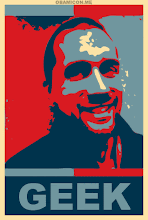(Again, the more of these I attend, the more I find myself going to sessions of folks that I know and absorbing from them. I like to blame this trend, more than anything, on the fact that the people I like, I happen to like, at least in part, because of their awesomeness - both personally and in e-learning.)
SKETCHNOTING - WHAT IS IT?
Per Kevin, it's taking notes in a visual way. Your handwriting, but embellishing with figures, drawings, and other adornments. It's not restrictive to papers...digital form (a la Tracy Hamilton) works, as well, on an iPad, tablet, etc. It's a process of listening, processing the information, then transferring it from the grey matter to the stage. It's a more advanced means of doodling while on a call, or scribbling in the margins during a meeting. You need to make a conscious decision prior to the meeting, then just do it. If you are focused in such a way, your retention will improve exponentially.
SUPPLIES
Pens, paper, pencils...oh my. Kevin could apparently spend a lifetime in a Hobby Lobby. Organizes his tools in PVC pipes laid horizontally (awesome idea). Specific tools of the trade:
Pens - Faber Castel Pitt, Prismacolor Premier, ZIG Millennium, Micron, Uni Ball Signo Gel Pen (These kinds of pens are the kinds that you love writing with, and get a bit of a cold sweat if you lose.) Faber Castel Pitt Grey Tone set is recommended.
Paper - The 'heavier' the paper, the better the paper will take the ink. Standard printer paper is known as 20lb paper (500 sheets = 20 lbs). Moleskin and sketchbook paper can come in as high as 86lb, hence why the pen feels better on this type of paper.
LIVE SKETCHNOTING
Benefits - Improves listening skills, aids in more efficient processing of information, visualizes information more easily.
Downfalls - Intimidating to try and keep up, can create self-pressure and anxiety (how do I do this?), inability to process/sketch-in mistakes.
Tips - Arrive 10-15 minutes early, sit near front of the screen, be under good light source, pre-sketch the title/name/header (overall idea), and include the conference or hashtag name.
POST SKETCHNOTING
Benefits - Shorthand for recording, you can use pencil, you can clean things up later.
Downfalls - More time later, temptation to perfect/erase, sharing of the sketchnote is delayed.
Tips - Identify talks (the sessions, keynotes, etc.), and set a time after the session, etc. to sketch.
FORMATS
Formats include: Header with columns, All columns (no header), All rows, Hub & Spoke (start center, stem out), "S" Flow, Spiral. Really, at the end of it all, it's any format that works for you...that assists in your understanding of the session, talk, etc. Each segment of the talk/session should be its own 'region' on the paper. (**You can practice with TED talks, or even TV shows...) Use flow, whatever way makes sense to you. Use different styles of boxes or different types of arrows to show different types, meanings, etc.
WHO AND WHERE
Characters (Who) add visual appeal that may help pull notes into that emotional context where mood and tone are needed. Start with a simple stick figure...be that simple. Add details to add character. Per Kevin, "add mittens, booties, and alter the center of gravity (slanted line for body), and you can do anything". The characters should help tell the story...use small kids to help model the drawings. Remember - It's not really about the face or the drawing...that's just support. The note itself is the main star. Location (Where) adds context.
TEXT AND DIALOGUE: HEADERS AND TITLES AND CAPTIONS AND QUOTES
Bigger, bolder pen for main headers, smaller point for sub-headers. Practice? Do the alphabet 100 times...all in different styles. You want it written down, fast, in your style, but you don't' want to be focusing on the art more than the session itself.
Kevin uses lower case for captions, and upper case for quotes to add impact. Visually, you can differentiate between the two styles. Speech bubbles are just...well, bubbles. Draw a circle, draw a tail on it. Speech = solid line, thought = puffy, whisper = dash, outburst = jagged, etc...
ICONS AND CONCEPTS
The importance of symbolism/symbology is huge. Keep your icons and symbols simple, but smart. Always remember, while you may share it, it's still PRIMARILY for you. As simple as you need it to be...Concepts are hard, though. Kevin gave an example of morality. How would you sketchnote morality? Definitely higher end material, but possible (though, likely, a more personal meaning and, so, likely to be difficult to share.)
(**Sketchnoting is like math...like your times tables. The more you do it, the less time you need to do it AND the more kneejerk/reactionary it becomes.)
OTHER THINGS TO CONSIDER
- Create your own style. No reason to copy. Be inspired, but be original.
- The page does not have to be filled. Write, sketch until the points have been recorded.
- Use symbols and icons wherever possible. They're quick, but it takes time and practice.
- Keep your pen or pencil moving...constantly. Stopping means you have to start again.
- Make mistakes! Love them, they're how you're going to learn.
CONCLUSION
What an awesome session this was...seriously. Such a different way to look at things and, on the heels of doing things that don't necessarily make you comfortable (from this morning's keynote), it's a really cool new way to look at things differently. With a natural predisposition towards art myself, this is a natural flow between. A lot of the points that Kevin brings up, though, I will have to watch for - erasing, overperfecting, etc. On the other hand, being a live blogger already, this could work!
Be in the moment...be in the knowledge of the moment, and much like teaching, touch on all the modalities you can.
Subscribe to:
Post Comments (Atom)


No comments:
Post a Comment